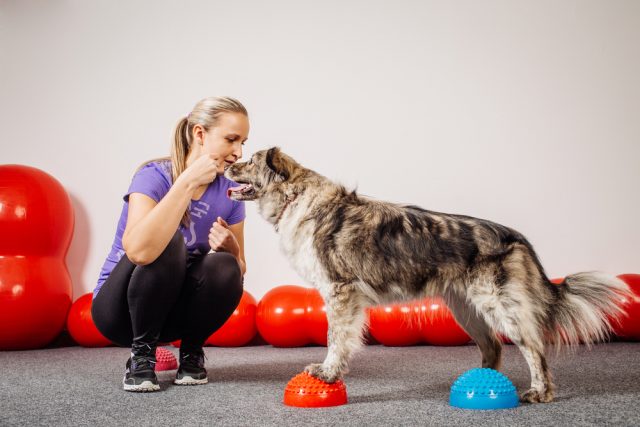While it is true that any age or breed of dog can be trained, there are situations where the dog you are trying to train has a prior history that you know little or nothing about. This is the case with rescue dogs.
While obviously trainable, there are some things you need to keep in mind when you start to train your new best friend. These tips will help make sure both you and your dog do not end up frustrated or worse off than when you started.
Overcoming The Past
While a puppy is pretty much a clean slate, the rescue dog has months or years of experiences (good and bad) that have shaped who he is. You must take these into consideration before you start training.
Ask yourself these questions:
Does my dog even trust me enough to want to work with me?
If your dog won’t let you touch him, he probably is not ready to start agility training, which takes a high degree of trust. You need to first work on trust and building a relationship. Additionally, if your new rescue shows signs of stress and won’t even look at you when you try to train, it’s time to step back and work on relationship building first.
Does he seem to have an aversion to anything that might affect how you train?
For example, maybe she was hit with long objects and your target stick frightens her. Or maybe you plan on doing therapy work but she is scared of smooth surfaces, like the tile floor of a hospital room. Maybe you plan on taking her to your parents, but she is scared of men. If so, you are going to have to spend time conquering her fears through positive experiences before you go any further and try to do other training that involves that scary object, place, person, etc.
Related: 10 Of The Most Common Fears And Phobias In Dogs
How do they react to getting something wrong?
Most dogs that have been corrected or punished for doing something wrong will shut down when they make a mistake rather than offer things until they get it right. If you plan on using positive reinforcement training, especially shaping, you are going to have to take into account that your dog may not offer things right away, or ever. In which case, you will have to figure out a different way of training.
Are they too scared of the environment to even pay attention?
If the dog spent the first few years of her life in a cage, backyard, or shut away in a bathroom being ignored, the “real world” can be scary and distracting. If you normally train somewhere busy like the park, a pet store, or even in a group class, you may find she can’t listen to you. Time to move back home, to a quiet room, and ease her into civilization.
Related: 6 Best Online Dog & Puppy Training Classes (+1 to Avoid)
Moving Forward
Once you have determined what extra obstacles you need to overcome, don’t just forget them. You never know when a situation may trigger something in your dog’s past and make those old actions come out. Dogs have great long term memory so just be cognizant and patient with your sweet rescue.
Remember, it’s not their fault they are that way. And while it may be a challenge, it’s a good one. It will sharpen your skills as a dog trainer and teach you more than you ever knew was possible. Some of the best trainers I know have learned through training their own rescue dogs and they are superior at their craft.


 Toledo, United States.
Toledo, United States.